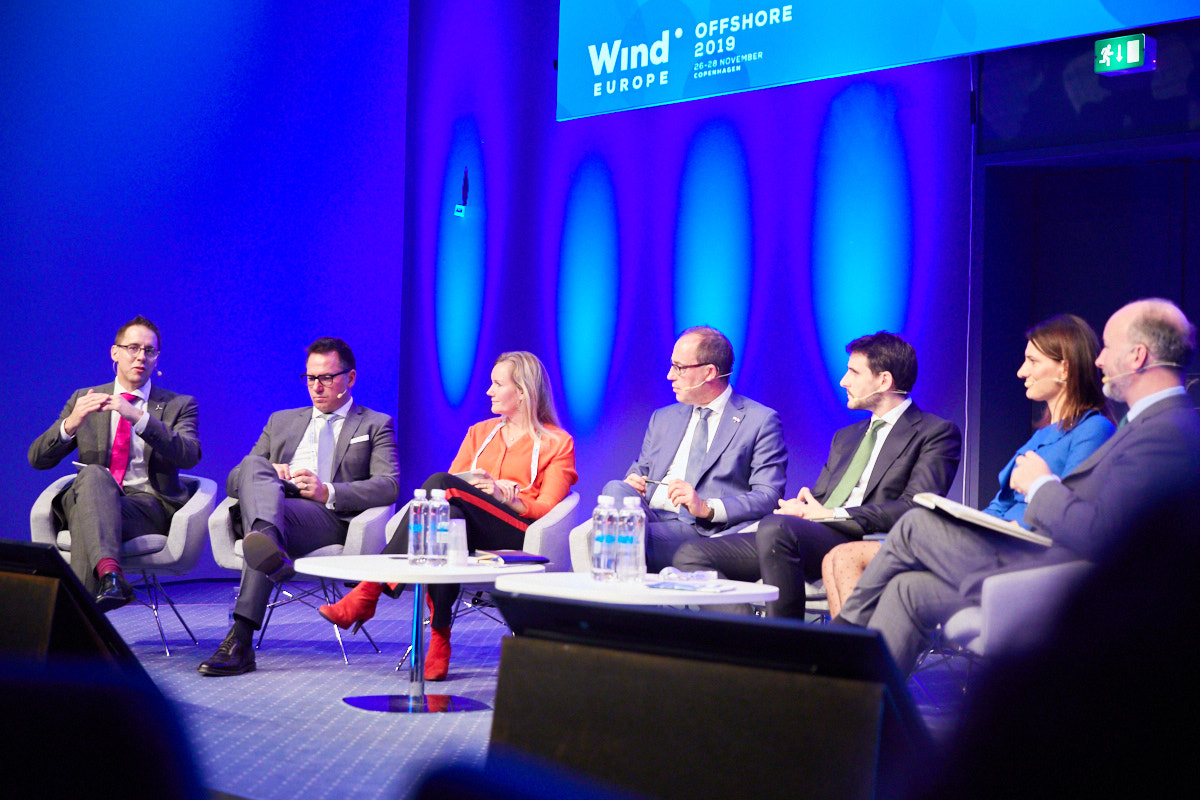How to keep Europe’s offshore wind supply chain competitive?

The growth of Europe’s wind industry has brought great opportunities, but it has also put the supply chain under unprecedented pressure. To get to 450 GW of offshore wind by 2050, Europe will need a wind industry capable of rising to the technological challenge while keeping offshore wind at competitive cost levels.
Are European markets strong enough to sustain Europe’s industry? Is the European supply chain competitive enough to seize opportunities beyond Europe? And how does the current climate in international trade affect European companies? Can Europe remain the beacon of offshore wind?
Panellists at WindEurope Offshore 2019 agreed that international collaboration is key to answering all these questions. If there’s not enough of a pipeline for projects, it will be difficult for the local industry to make the investment. RenewableUK’s Maf Smith noted that “Politicians usually set the ambition for wind energy – which is a funny situation because sometimes they’re more ambitious than the industry itself!” He noted that “Innovation is going to be critical, not just turbines getting bigger but also how we include data, how we operate.”
Innovation proved to be a common point on the panel: Shell’s Melanie Kievit echoed this, saying that innovation will be key to bolstering the supply chain; Koos van Oord noted that “Clever engineering by innovation can bring costs down. For this to happen, collaboration is essential,” and Siemens-Gamesa’s Albert Dominko exemplified both innovation and collaboration by describing different partnership models between customers and suppliers as a way to attract investors.
Social acceptance will also be key to the offshore supply chain, according to PGE Baltica’s Monika Morawiecka. Wind energy can provide jobs – and reskilling presents a major opportunity. This means boosting public support for wind projects. Cesar Marzabal Astigarraga took up this thread, saying that “Stability and collaboration with local authorities and government are key for the local supply chain.”
Finally, the panellists discussed the importance of geographical diversification – every component does not need to be manufactured in every location, for example. A more geographically diverse supply chain will be a healthier supply chain. The panel discussed the rapid emergence of Asia Pacific as a growth market, noting that there were plenty of opportunities for collaboration and business with markets such as Japan.
How can Europe reach 450 GW of offshore wind? Find out in our new report Our Energy, Our Future, How offshore wind will help Europe go carbon-neutral

